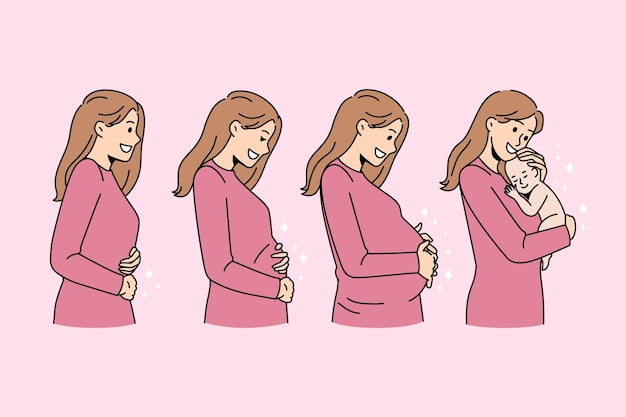
Contents
Introduction
Giving birth to a child is a unique experience that no two women can ever go through in exactly the same way. For third-time mothers, the labor and delivery experience can be vastly different from their first or second childbirth. In this article, we will explore the unique labor and delivery experience of third-time mothers.
-
Familiarity with the process
Third-time mothers have already gone through labor and delivery twice before, which means they are familiar with the process and know what to expect. They have experienced the contractions, the pain, and the discomfort. They know how to breathe through the contractions and how to cope with the pain. This familiarity with the process can make the labor and delivery experience less scary and more manageable for third-time mothers.
-
Shorter labor
Studies have shown that third-time mothers tend to have shorter labors compared to their first or second childbirth. This is because their bodies are more experienced and better prepared for childbirth. The cervix may dilate faster, and the baby may descend more quickly through the birth canal. Third-time mothers may also experience fewer interventions, such as inductions or epidurals, which can lengthen labor.
-
More confidence
Third-time mothers may feel more confident in their ability to give birth and care for their newborn. They have already gone through the process before, and they know what to expect. They may also have more confidence in their ability to breastfeed and care for their newborn, as they have already done it twice before. This confidence can help third-time mothers feel more empowered and in control during labor and delivery.
-
More challenges
While third-time mothers may be more familiar with the labor and delivery process, they may also face more challenges. For example, they may have older children who need to be cared for while they are in labor. They may also have more responsibilities at home and work, which can make it harder to rest and prepare for childbirth. Third-time mothers may also experience more physical challenges, such as a weaker pelvic floor or more discomfort during pregnancy.
-
Different birth preferences
Third-time mothers may have different birth preferences compared to their first or second childbirth. They may be more open to different birthing positions, such as squatting or standing, or they may prefer a water birth. They may also have a better idea of what they want and don’t want during labor and delivery, such as pain management options or who they want in the delivery room. Third-time mothers may also be more assertive in advocating for their birth preferences.
Conclusion
The labor and delivery experience for third-time mothers can be both similar and different from their first or second childbirth. They may feel more confident and familiar with the process, but they may also face more challenges and have different birth preferences. Whatever their experience may be, third-time mothers should feel supported and empowered during this unique and special time in their lives.




